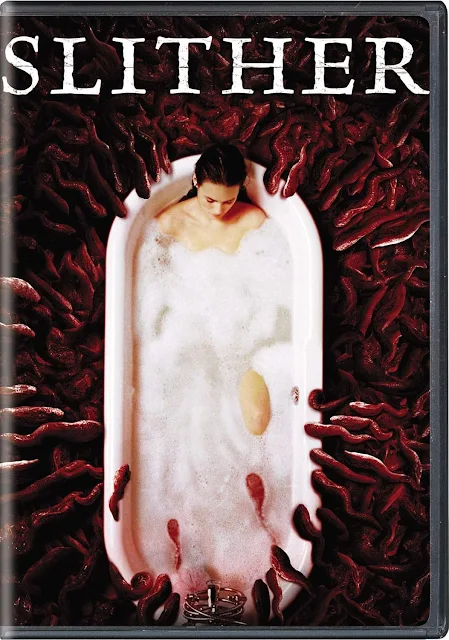The film's narrative, rooted deeply in the horror genre's soil, flourishes under his care into a strange bloom of dark wit and visceral scares.
Nathan Fillion's portrayal of the character Bill Pardy offers a nuanced take on the archetype of the small-town sheriff. Fillion, who had already garnered a cult following for his role in "Firefly," brings a similar charisma to "Slither." His character is etched with the lines of an everyman thrust into an outlandish situation, embodying both the bewildered human response to incomprehensible events and the courage that emerges from it. Fillion's ability to blend wry humor with earnestness provides a necessary grounding force in a tale spiraling into chaos, creating a character that is both relatable and aspirational.
"Slither" is an early exhibition of James Gunn's distinctive voice, a voice that would come to define a new era of blockbuster cinema. Its blend of satire and squirm-inducing horror sets it apart as a film that defies easy categorization. With strong performances, particularly from Nathan Fillion, and a narrative that is as thoughtful as it is thrilling, "Slither" is a robust piece of science fiction that invites both revulsion and introspection.
Gunn's knack for combining the grotesque with the absurd creates a cinematic tone that is as unique as it is unpredictable, setting the stage for his future as a filmmaker capable of drawing audiences into his distinctly quirky worlds.
Nathan Fillion's portrayal of the character Bill Pardy offers a nuanced take on the archetype of the small-town sheriff. Fillion, who had already garnered a cult following for his role in "Firefly," brings a similar charisma to "Slither." His character is etched with the lines of an everyman thrust into an outlandish situation, embodying both the bewildered human response to incomprehensible events and the courage that emerges from it. Fillion's ability to blend wry humor with earnestness provides a necessary grounding force in a tale spiraling into chaos, creating a character that is both relatable and aspirational.
His performance stands as a testament to his skill at navigating the interplay between normalcy and the fantastical, a trait that would serve him well in his subsequent roles.
The thematic heartbeat of "Slither" thrums with the fear of invasion, a narrative vein richly mined in the history of science fiction. The film's parasitic alien embodies the primal terror of loss of agency and the violation of the self, while the script deftly weaves in subtexts of personal obsession and the dehumanizing aspects of desire.
The thematic heartbeat of "Slither" thrums with the fear of invasion, a narrative vein richly mined in the history of science fiction. The film's parasitic alien embodies the primal terror of loss of agency and the violation of the self, while the script deftly weaves in subtexts of personal obsession and the dehumanizing aspects of desire.
It examines the dualities of love's power to both redeem and destroy through the tragic figure of Grant Grant, whose monstrous transformation becomes a dark mirror reflecting twisted devotion. Additionally, "Slither" taps into societal veins, critiquing the fragility of human connections and the ease with which a community can be infiltrated and disintegrated from within.
"Slither" functions as a cinematic homage, with its visual and narrative style echoing the camp and fervor of classic 1950s B-movies. Its creature effects—crafted through a blend of practical makeup, animatronics, and CGI—serve as a love letter to the tactile artistry of physical effects. These elements of horror are applied with a precision that enhances the film's ability to unsettle while maintaining a level of camp.
"Slither" functions as a cinematic homage, with its visual and narrative style echoing the camp and fervor of classic 1950s B-movies. Its creature effects—crafted through a blend of practical makeup, animatronics, and CGI—serve as a love letter to the tactile artistry of physical effects. These elements of horror are applied with a precision that enhances the film's ability to unsettle while maintaining a level of camp.
The town of Wheelsy, with its all-American veneer, becomes a character in itself, playing host to the film's macabre dance of death and laughter. Gunn's adeptness at using visual horror tropes to augment the film's thematic resonance is evident, as he juxtaposes the mundanity of small-town life with the grotesque spectacle of the alien menace.
It's a film that remains emblematic of Gunn's later work: a testament to the enduring appeal of stories that scare us, make us laugh, and most importantly, make us think.
Check out the themes of Superman 2025

















